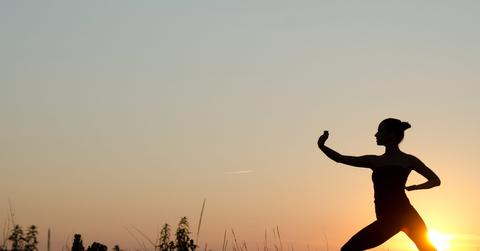
Tai Chi Benefits Golf Game
- Arnold Palmer“Success in golf depends less on strength of body than upon strength of mind and character.”
As a branch of Chinese medicine, Tai Chi grew out of Daoist meditative health practices with the goal of cultivating vitality and fostering a deeper connection to nature’s rhythm. It follows the same philosophy used in acupuncture, that a smooth flow of energy is key to maintaining harmony in the body.
But unlike acupuncture, which uses needles, Tai Chi uses meditation, breath and movement to maximize circulation through the channels of the body. “Tai Chi helps to increase one’s ability to be aware of the whole body in motion,” says Rick Powell, Owner of From The Heart Yoga & Tai Chi Center in Grand Rapids, Michigan. “It develops greater awareness of how the legs and waist are the main drivers for the torso and arms.”
But unlike acupuncture, which uses needles, Tai Chi uses meditation, breath and movement to maximize circulation through the channels of the body. “Tai Chi helps to increase one’s ability to be aware of the whole body in motion,” says Rick Powell, Owner of From The Heart Yoga & Tai Chi Center in Grand Rapids, Michigan. “It develops greater awareness of how the legs and waist are the main drivers for the torso and arms.”
To put that into practice, here are three Tai Chi exercises to elevate both your game and your overall health.
Health
We take breathing for granted, and often we’re not conscious of how changes in our breathing patterns due to stress can in-crease tension in our bodies. Taking time each day to focus on breath teaches us to slow down our thoughts and resist internal and external distractions.
Ultimately, when our mind is quiet our body can complete rehearsed movements with effortless precision, movements like a golf swing. And with enough training, even one deep breath can remove distractions on demand and let muscle memory take over.
Exercise: Start by sitting comfortably in a quiet space. Practice counting the breath at the end of each exhale while breathing in and out through the nose. Have 36 breaths as a goal. If you lose track of the count, and find yourself in a focused and quiet space, enjoy it! If the mind becomes busy again, just return to counting the breaths. Begin with five minutes a day and increase that time as you get comfortable with the practice.
Posture
Tilting heads to look at phones, rounding shoulders over laptops… These habits increase the load on the spine and the muscle imbalance causes tension.
The spinal cord is an extension of the brain and thus good posture increases cognitive function. Stand up, lengthen the spine, pull your shoulders and head back. Inhale deeply through your nose. Do you feel more alert? The breath you’ve practiced f lows unobstructed.
Exercise: Begin with your feet parallel and shoulder-width apart. Tuck your chin and elongate the spine as if the crown of your head is being pulled up by a string. Pull back your shoulders, letting your arms hang freely with the palms facing back. Tuck your pelvis under and bend your knees slightly to sink into position. Keep your body weight equally proportioned on each foot and feel your feet making roots into the earth. To begin, hold this position for five minutes a day. When you are ready, focus on the breath and begin counting each exhale.
Movement
Precision is key in Tai Chi. Visualize the movement. When the mind and body work together, motion is effortless. Performed correctly, the elegant and f lowing Tai Chi postures open pathways and activate the circulation of energy and blood throughout the body.
Critical nourishment is delivered to every tissue. Eyes brighten, the head clears, tension dissolves and muscles are able to move with smooth, supple motion. Tai Chi practice reinforces many of the same underlying principals used by golfers to achieve a consistently smooth golf swing.
Exercise: Stand with feet a little wider than shoulders, feet parallel. Bend the knees as if riding a horse. Begin turning the waist and torso to the left and right in a rhythmic fashion. Keeping the arms relaxed, allow them to swing naturally with the movement. Notice how the legs, waist, and torso move the arms. Do this for one to two minutes.
Vikki Nestico is a Registered Acupuncturist at Grand Wellness in Grand Rapids, Michigan Visit her website: grandwellness.net
